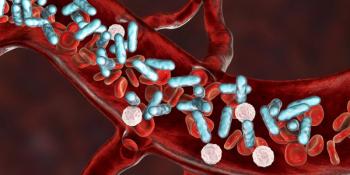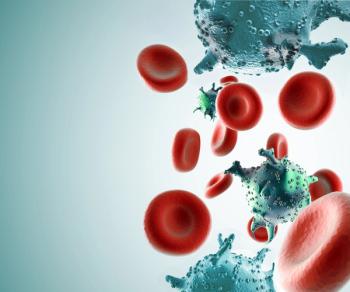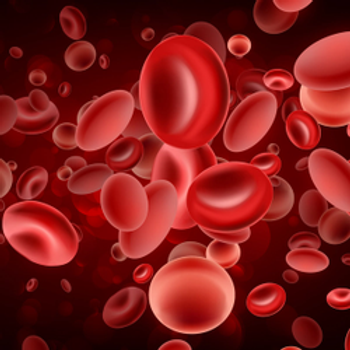
Talquetamab Bridging Strategy Appears Feasible in R/R Multiple Myeloma
Bridging therapy with talquetamab achieved “notable” disease control among patients with multiple myeloma in a retrospective study.
Using talquetamab-tgvs (Talvey) as bridging therapy demonstrated safety and feasibility prior to BCMA-directed chimeric antigen receptor (CAR) T-cell therapy among patients with relapsed/refractory multiple myeloma, according to data from a multicenter retrospective study published in Blood.1
With a median follow-up of 6.9 months (IQR, 5.2-10.3) from the first talquetamab dose, bridging therapy yielded an overall response rate (ORR) of 71%, a very good partial response (VGPR) or better in 40% of patients, and complete responses (CRs) or better in 19%. Responses to talquetamab did not significantly differ based on high-risk features such as extramedullary disease (EMD), high-risk cytogenetic abnormalities, previous anti-BCMA therapy, and high baseline ferritin.
Among the evaluable patients who proceeded to CAR T-cell therapy, the ORR was 88%; CRs and VGPRs occurred in 54% and 18%, respectively. Additionally, the CR rate was 55% in patients who received ciltacabtagene autoleucel (cilta-cel; Carvykti) and 47% with idecabtagene vicleucel (ide-cel; Abecma) and the respective ORRs were 78% and 95% in those without prior BCMA-directed treatment.
Neither the median progression-free survival (PFS) nor the median overall survival (OS) was reached, and the 6-month estimated likelihood of progression was 12.6% (95% CI, 7.6%-20.6%). Based on multivariate analysis, EMD was the sole factor that correlated with significantly worse PFS (HR, 4.53; 95% CI, 1.75-11.7; P = .0018) and OS outcomes (HR, 4.95; 95% CI, 1.30-18.76; P = .018).
“The disease control achieved with talquetamab bridging was notable, with [approximately] 70% of patients achieving a response and an additional 13% maintaining stable disease…. The observed ORR of 88%, including [a higher than] 50% CR [rate] across both products, compares favorably with outcomes from both pivotal and real-world studies of cilta-cel and ide-cel,” lead study author Binod Dhakal, MD, MS, an associate professor of medicine in the Division of Hematology at Medical College of Wisconsin, wrote with coauthors in the publication.1-3 “In summary, talquetamab bridging appears safe and feasible, enabling the majority of high-risk, difficult-to-treat patients to successfully proceed to BCMA CAR [T-cell] therapy.”
Investigators of this multicenter retrospective study assessed talquetamab bridging before standard-of-care cilta-cel or ide-cel among 134 patients across 18 academic medical centers in the US and 2 centers in Germany. After step-up dosing, 82% of patients received talquetamab at 0.8 mg/kg subcutaneously every other week for a median time of 23 days (range, 13-52).
The study’s primary end points included safety, feasibility, and efficacy of talquetamab as a bridge to CAR T-cell therapy. Efficacy end points included response rates and time-to-event outcomes. Safety end points included cytokine release syndrome (CRS), immune effector cell–associated neurotoxicity syndrome (ICANS), talquetamab-related toxicities, delayed neurotoxicity, infections, second primary malignancies, and severe cytopenia.
Patients with relapsed/refractory multiple myeloma who underwent leukapheresis prior to bridging therapy with talquetamab and the intention of receiving standard cilta-cel or ide-cel were eligible for inclusion in the study. Those who were treated with talquetamab as holding therapy prior to continued bridging treatment were also included.
The median patient age was 65 years (range, 59-72), and most were female (51%) and White (81%). Most of the population had an ECOG performance status of 2 or lower (99%), and triple–class–refractory status (76%). Additionally, 44% of patients had high-risk cytogenetics, 41% had EMD, 10% had prior anti-BCMA therapy, and 34% had penta-refractory status. The median number of prior lines of treatment was 5 (range, 4-6).
Nineteen patients received talquetamab as holding and bridging therapy before apheresis due to rapid progression, 84% of whom responded to talquetamab. Additionally, 84% of these patients were able to proceed to CAR T-cell therapy.
Among all patients who received talquetamab as bridging therapy, the most common toxicities of any grade included CRS (73%), oral toxicities (70%), skin toxicities (38%), nail toxicities (17%), and weight loss (15%). Additionally, the most common grade 3/4 or higher adverse effects (AEs) were ICANS (2%), weight loss (1.5%), and skin toxicities (0.74%).
Of the 119 patients who proceeded to CAR T-cell therapy, the most common any-grade toxicities included CRS (68%), infections (18%), ICANS (6%), and delayed neurotoxicity (1.6%). Grade 3/4 or higher AEs in this cohort included infections (5%), CRS (1.7%), ICANS (0.84%), and second malignancies (0.84%).
References
- Dhakal B, Akhtar OS, Fandrei D, et al. Sequential targeting in multiple myeloma: talquetamab, a GPRC5D bispecific antibody, as a bridge to BCMA CAR-T cell therapy. Blood. Published online August 1, 2025. doi:10.1182/blood.2025029773
- Hansen DK, Sidana S, Peres LC, et al. Idecabtagene vicleucel for relapsed/refractory multiple myeloma: real-world experience from the Myeloma CAR T Consortium. J Clin Oncol. 2023;41(11):2087-2097. doi:10.1200/JCO.22.01365
- Sidana S, Patel KK, Peres LC, et al. Safety and efficacy of standard-of-care ciltacabtagene autoleucel for relapsed/refractory multiple myeloma. Blood. 2025;145(1):85-97. doi:10.1182/blood.2024025945
Newsletter
Stay up to date on recent advances in the multidisciplinary approach to cancer.

















































































